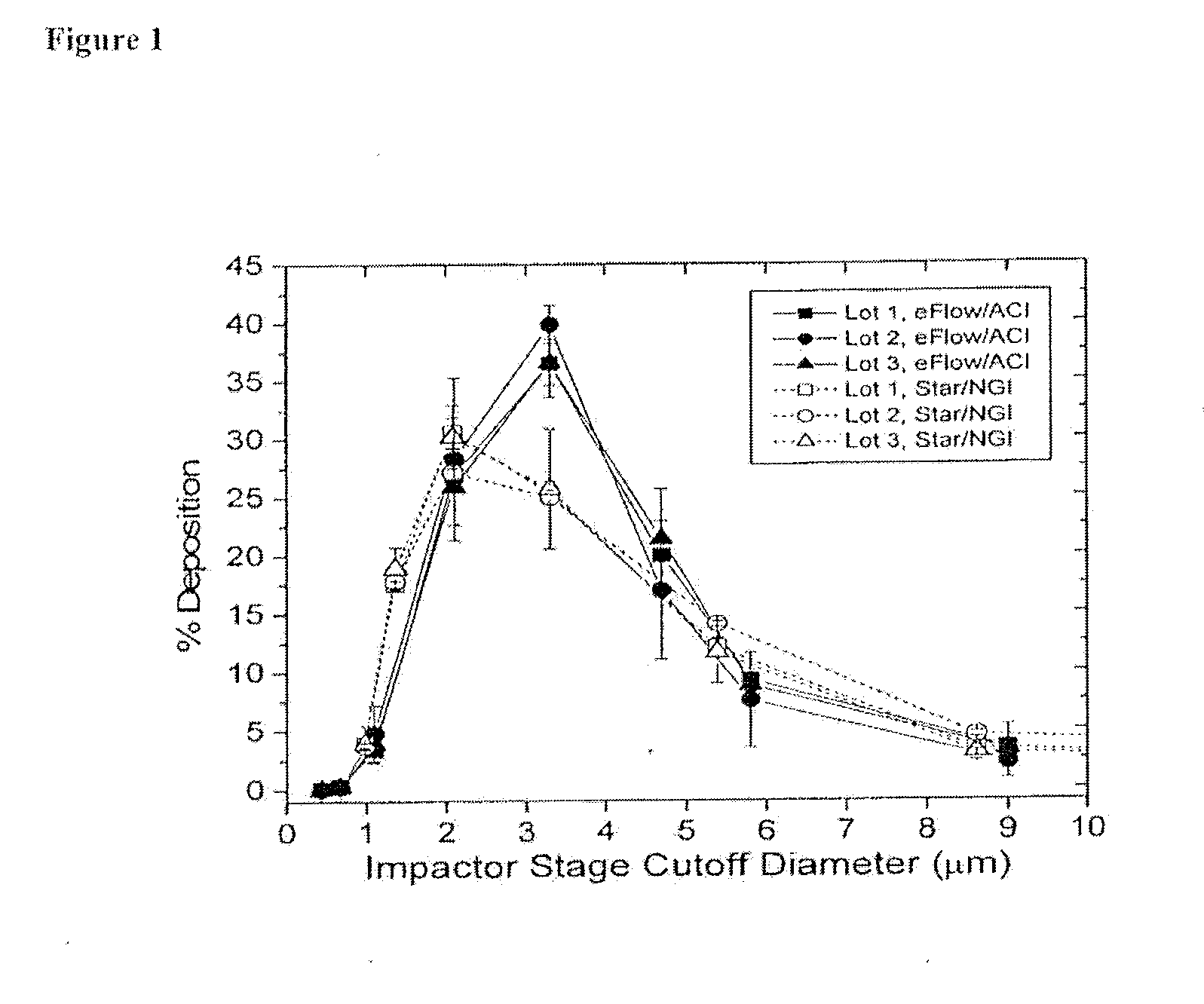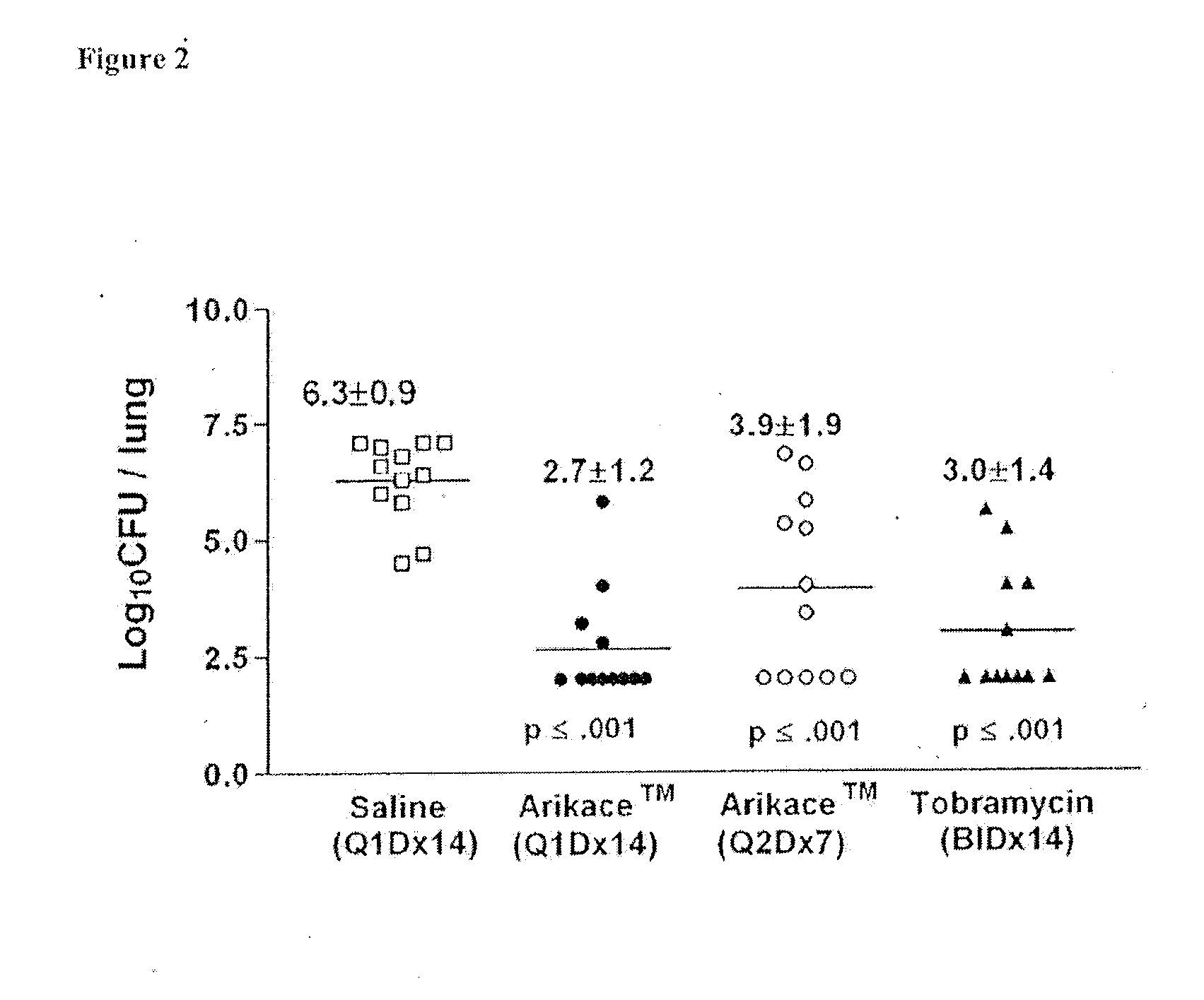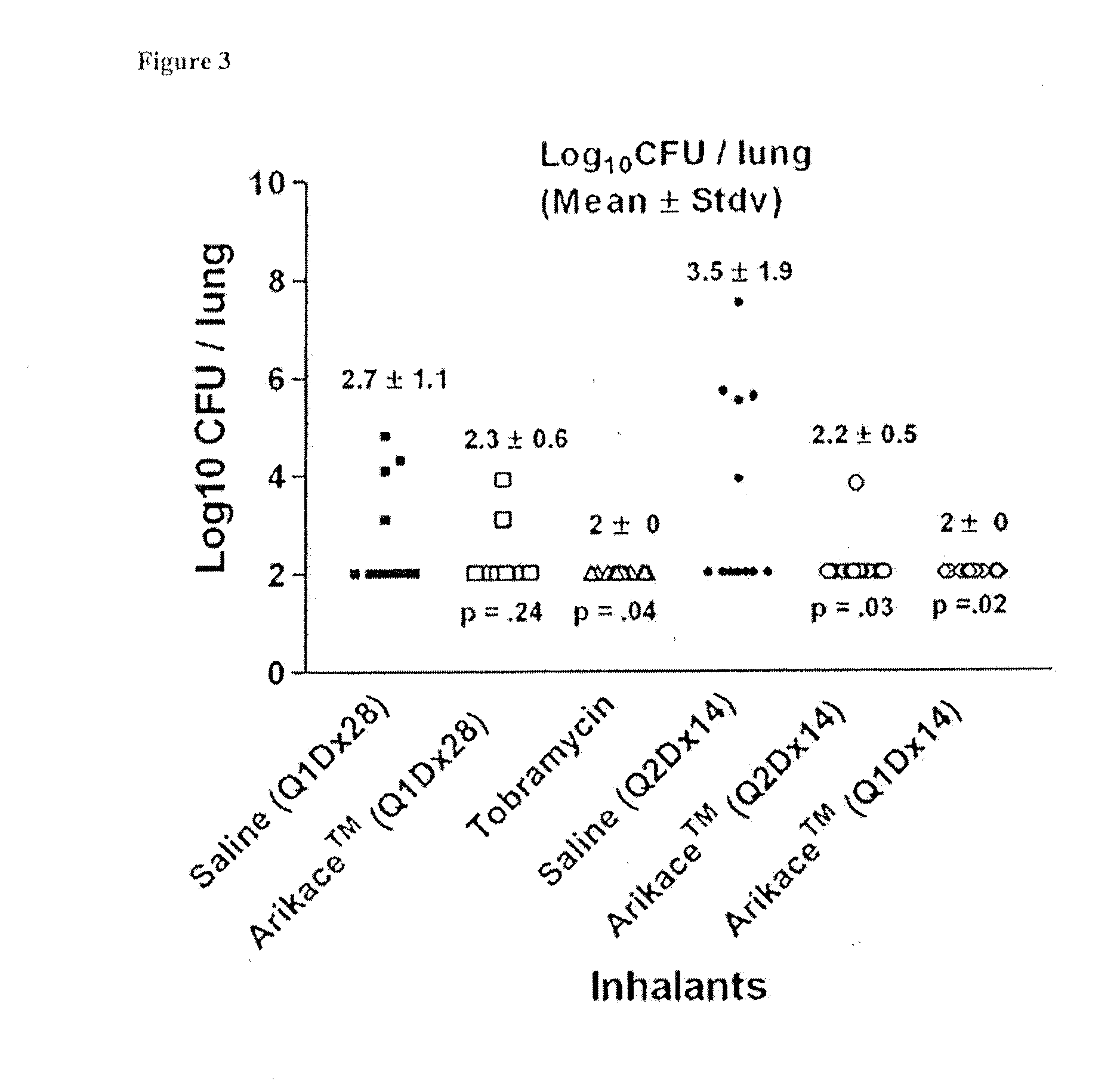Method for treating pulmonary disorders with liposomal amikacin formulations
a technology of liposomal amikacin and pulmonary disorders, which is applied in the direction of biocide, animal repellents, dispersed delivery, etc., can solve the problems of clogging the opening of the pancreas and the lungs, chronic respiratory and digestive problems, and mucus beginning to build up and star
- Summary
- Abstract
- Description
- Claims
- Application Information
AI Technical Summary
Benefits of technology
Problems solved by technology
Method used
Image
Examples
example 1
Phase 1b / 2a Study
[0135]Data used for this population PK analysis were obtained from two human clinical Phase 1b / 2a studies in which CF patients, chronically infected with P. aeruginosa, were administered a total of 500 mg of Liposomal Amikacin daily (in two 20 minute sessions with a 5 minute rest period in between) for 14 days.
[0136]Amikacin serum samples were obtained pre-dose, and 1, 2, 4, 6, 8, 12 and 24 hours post-dose on Days 1 and 14, while urine samples were collected over 6 hour intervals on Day 1 and Day 14 for a period of 24 hours. Sputum samples were also collected on Day 1 and Day 14, soon after the dose was administered, between 4 and 6 hours after dosing and prior to dose administration on the following day, as well as on Days 14, 21, and 28. Serum, sputum and urine samples were assayed for amikacin using Liquid Chromatography-Mass Spectrometry / Mass Spectrometry (LC-MS / MS).
[0137]Pulmonary function tests (PFT) were carried out during screening from Day -14 to 0) and at ...
example 2
Phase 1 Clinical Study
[0164]Two Phase 1 single dose clinical studies were completed with 20 and 50 mg / mL formulations of Liposomal Amikacin in healthy volunteers and in CF patients, respectively. Six healthy volunteers received a single dose of 120 mg of Liposomal Amikacin and tolerated it well, and exhibited prolonged retention of the radiolabeled liposomes in the lungs, with a measured half-life of 46 hours.
[0165]Liposomal Amikacin was administered to CF subjects with chronic P. aeruginosa infections in a human clinical Phase I study (Study 3). Single doses of 90 mg (n=6), 270 mg (n=6), or 500 mg (n=4) were administered to CF subjects to evaluate the safety, tolerability and pharmacokinetics of liposomal amikacin for inhalation. A total of 24 patient dosing sessions of a single dose administration of Liposomal Amikacin or placebo by inhalation via the Pari LC Star nebulizer were evaluated. Two serious adverse events were reported (both occurring in placebo group). Both events reco...
example 3
Phase 2 Clinical Study
[0167]The study design is summarized in FIG. 4. Patients included in the study were CF patients greater than or equal to six years in age with chronic P. aeruginosa infections. Patients were off inhaled antibiotics for 28 prior to beginning the study. Patients were stratified by baseline FEV1(% pred) and randomized 2:1 to ARIKACE® (liposomal amikacin) or placebo (1.5% NaCl). Cohort1 received 280 mg and Cohort2, 560 mg of active drug or placebo for 28d by inhalation with PARIeF1ow nebulizer, and were followed for 28d during which no inhaled antibiotics were administered. Safety, pharmacokinetics, Pa sputum density, Quality of Life (CFQ-R) and exacerbation rate were evaluated weekly during the study period of 56 days.
[0168]In summary, daily administration of 280 mg and 560 mg liposomal amikacin for 28 days appeared safe and well-tolerated. Administration of liposomal amikacin at 280 mg and 560 mg for 28 days results in a dose-dependent improvement in lung functio...
PUM
| Property | Measurement | Unit |
|---|---|---|
| Fraction | aaaaa | aaaaa |
| Time | aaaaa | aaaaa |
| Time | aaaaa | aaaaa |
Abstract
Description
Claims
Application Information
 Login to View More
Login to View More - R&D
- Intellectual Property
- Life Sciences
- Materials
- Tech Scout
- Unparalleled Data Quality
- Higher Quality Content
- 60% Fewer Hallucinations
Browse by: Latest US Patents, China's latest patents, Technical Efficacy Thesaurus, Application Domain, Technology Topic, Popular Technical Reports.
© 2025 PatSnap. All rights reserved.Legal|Privacy policy|Modern Slavery Act Transparency Statement|Sitemap|About US| Contact US: help@patsnap.com



